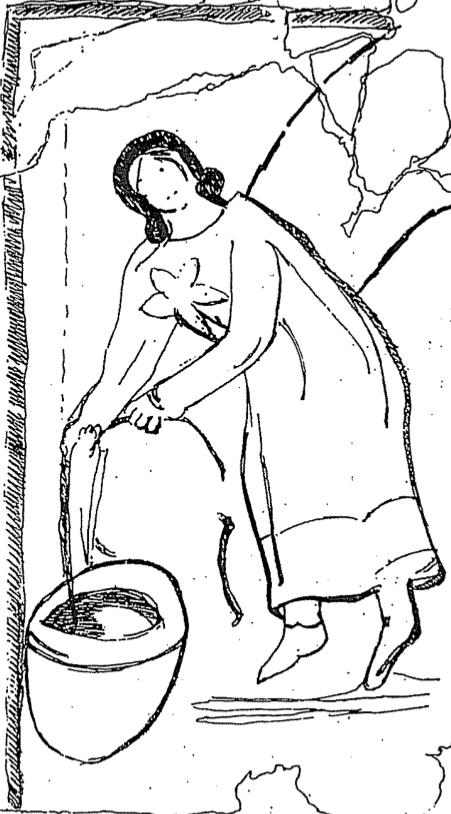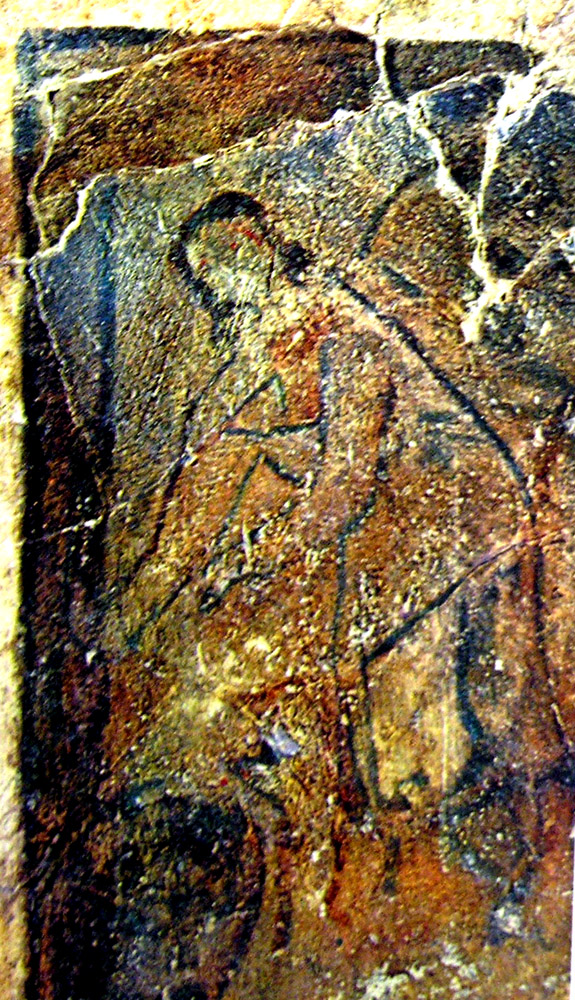Some scholars take the image to represent instead the "Annunciation at the Spring," a popular subject in early images. This iconographic type is based on the Annunciation account in the Protevangelium of James (§ 11): Mary goes outside to fill a pitcher and hears a voice that says, "Hail, thou who hast received grace; the Lord is with thee; blessed art thou among women!" She looks all around and cannot see whoever it was that spoke those words, so she goes back to work in her house. There, an angel gives her the rest of the message, "Fear not, Mary; for thou hast found grace before the Lord of all, and thou shalt conceive, according to His word."
Peppard (155-201) is a strong exponent of this identification. He dismisses the "Samaritan Woman" theory on the grounds that all other early images of that episode include Jesus with the woman, whereas in "Annunciation at the Well" images she will be alone. In this painting not only is she alone but there is a large empty space behind her that Peppard says can represent "the bodiless voice" that Mary hears in the Protevangelium. He also notes that there appears to be a five-pointed star on the woman's torso, which could symbolize the new child in her womb. The star, he suggests, is what subsequent images repositioned to the shoulder of her mantle, and the water vessel survives all the way into the Renaissance art as a vase with flowers.
As to the blank space, it should be noted that there are a number of other blank areas in the Dura panels. Kraeling (68) suggests a different figure from scripture, Rebecca. In Genesis 24:11-20 that young woman draws water from the family well for Eliezer and his camels after his journey from Canaan. This identification is attractive. For one thing, in the drawing of the painting that was done soon after the Dura excavations (see below) it is clear that the woman is pulling on the rope in a manner that Kraeling believes to involve tipping the bucket at the bottom of the well, so that the central point of the image seems to be the actual drawing of the water, an act that is repeatedly emphasized in the Genesis narrative. In the Middle Ages the Glossa Ordinaria (I, 141-42) interpreted Rebecca in this context as an allegory of the Church. If this notion was current as early as the 3rd century, an image of Rebecca providing water for Eliezer could read allegorically as the Church providing baptism for the new converts in the pool, which is right beside the image.

Read more about images of the Annunciation.
Read more about images of Jesus and the Samaritan Woman at the Well.
Read more about images of Rebecca.
